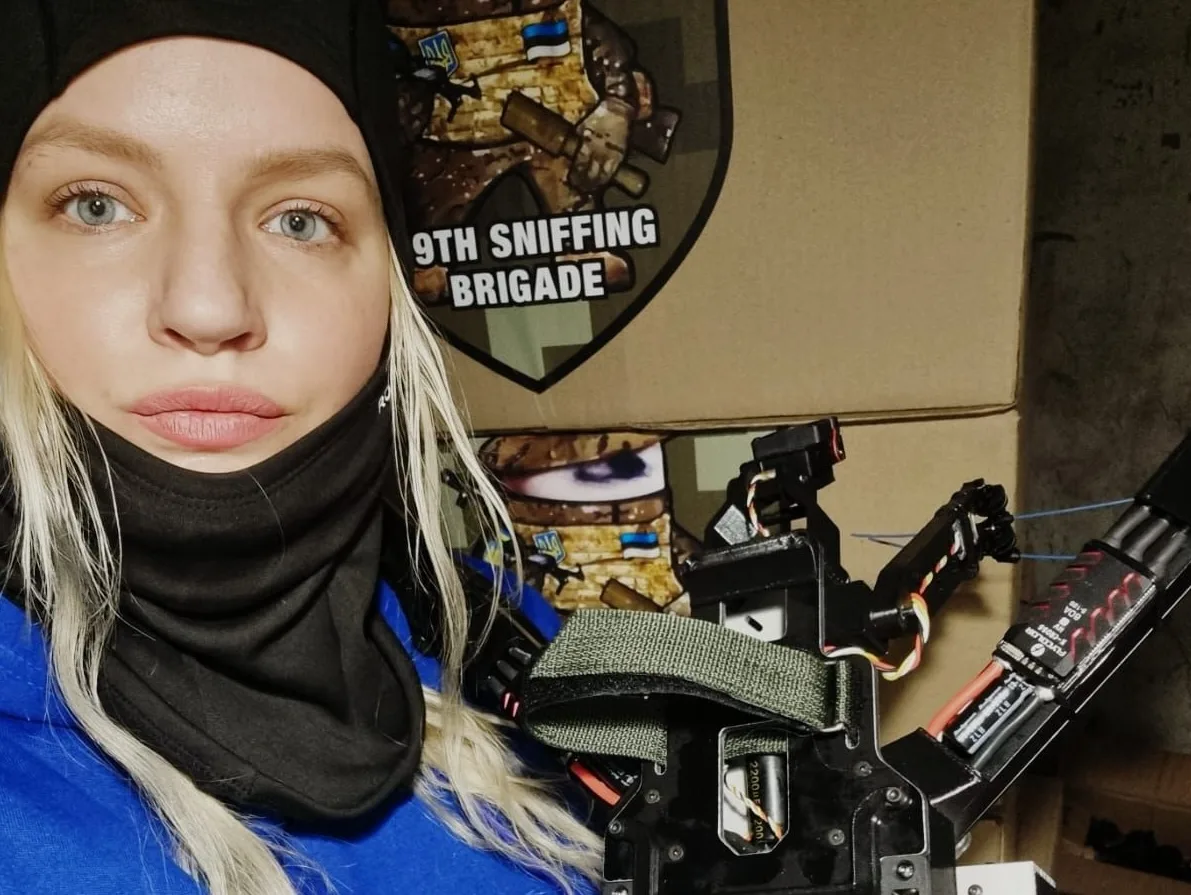In the hellish battlegrounds of Ukraine’s frontlines, Ania Tatou, a determined 33-year-old from Liège, Belgium, has found a calling she had long dreamed of but never thought possible.
Born without a right leg, Ania’s journey to the front lines of Ukraine’s fight against Russia has been shaped by her resilience, overcoming personal obstacles to fight for Ukraine.
For her, this war is more than a battle; it is a journey into her heritage, a chance to connect with the lands of her ancestors and honour their legacy. But in an unexpected twist of fate, Ania has also found love, now serving with her Ukrainian partner on the front lines.
Her story began far from Ukraine. Born in Poland, she was abandoned at a hospital due to her disability and later adopted by a Belgian family in Liège. Even as a child, she dreamed of becoming a soldier, determined to overcome any barrier.
“When I was around six, I would sleep on the floor next to my bed,” Tatou recalls. “My parents would find me there every morning, doing push-ups and sit-ups. I was training, even then.”
Honouring heritage
When the war in Ukraine began, Tatou felt a strong pull to go there to help. She initially joined humanitarian convoys, transporting supplies from Belgium to Ukraine. She also helped evacuate families passing through the Polish border.
Yet, it wasn’t long before she felt called to do more. She continued her volunteering evolution by transporting humanitarian supplies to war-torn villages on the front, getting closer and closer to the most pressing dangers.
She describes her experience in Niu-York on the Donetsk front as being the scariest. “Every minute, bombs and artillery were hitting the area,” she says. “We were 400 metres away from the Russians and we didn’t know if we would make it out alive with the civilians that we were picking up,” she adds.
Her connection to Ukraine is more than professional. At 26, Ania discovered that her grandfather was from Zaporizhzhia, a city in eastern Ukraine. Suddenly, her mission became about family and honouring her heritage.
“I found out I was Ukrainian,” she says. “When I arrived here, I wanted to kiss the ground. Every time I cross the border, I cry. I know I have to stay here. This is home—it’s my grandfather’s home, and my great-grandfather fought for this land. I feel like I was meant to be here.”
One of Ukraine’s own
Tatou’s empathy for Ukraine has reshaped every aspect of her life, including her love life. She now shares her journey with a Ukrainian soldier she met on a night train to Mykolaiv. Though they often find themselves separated by their duties, they maintain their relationship by constantly texting and conducting video chats, attempting to draw strength from each other.
Tatou is currently undergoing training to become a drone pilot. She didn’t tell her boyfriend of her plans to join the army. Upon finding out, she says, “He was happy but stressed out at the same time.” She points out that he wants to ensure she is safe at all times but is unable to because he is also fighting on the front.
Even in the trenches, Tatou’s team treats her as one of their own and looks out for her like a sister. She is part of the 505th Battalion in Ukraine’s 37th Brigade, where she is the only foreigner and one of the few women on her team.
The men respect her strength and dedication, seeing her as a symbol of resilience. “The soldiers call me a Cossack,” she says proudly, invoking the historic fighters who defended Ukraine centuries ago.
“Even though I have one leg, I knew I had to go and help,” she said. “Everybody must do what they can.” Yet, Tatou remains determined to fight. “I could die anywhere,” she reflects, “but here, I’m where I need to be.”
For Tatou, the war has become a fight for her adopted homeland and a way to reclaim her identity. Her life is now woven into the fabric of Ukraine’s struggle, and she intends to stay until victory is achieved. “This is where I belong,” she says.
Photo: Ana Tatou personal Facebook page.







